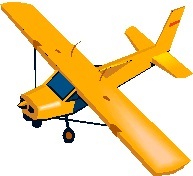Difference between revisions of "GCDAMP- Over-Flights"
Cellsworth (Talk | contribs) |
Cellsworth (Talk | contribs) |
||
| Line 50: | Line 50: | ||
==2013 Overflight Wrap Up== | ==2013 Overflight Wrap Up== | ||
| − | The total cost of conducting the overflight including the collection and processing of the data was | + | The total cost of conducting the overflight including the collection and processing of the data was $525k (source: June 26, 2013 Webex meeting minutes) <br> |
"The 2013 image collection was a success. Totally cloud-free imagery for the entire corridor was collected in 6 days. Certain lines required reflights due to turbulence which produces image smears. Turbulence was the only delaying factor, especially in flight block G, because it is perpendicular to the prevailing high winds." | "The 2013 image collection was a success. Totally cloud-free imagery for the entire corridor was collected in 6 days. Certain lines required reflights due to turbulence which produces image smears. Turbulence was the only delaying factor, especially in flight block G, because it is perpendicular to the prevailing high winds." | ||
Revision as of 14:19, 6 July 2021
|
|
High-resolution image collection provides a rich archive of aerial imagery that is used to track changes of the Colorado River in Grand Canyon. Imagery is acquired from an airplane in Grand Canyon National Park along the Colorado River corridor and the Little Colorado River starting Memorial Day weekend and continuing through the first week of June. This imagery is used by the USGS and partners from the Glen Canyon Dam Adaptive Management Program (GCDAMP) to monitor changes in the Colorado River and riparian ecosystem in Grand Canyon and impacts of management including Glen Canyon Dam operations. Water released from Glen Canyon Dam is reduced to a steady discharge of 8,000 cubic feet per second (cfs) in the Colorado River for the duration of the image collection mission. The low river discharge is required because consistent water levels are necessary for remote sensing image analyses that compare this new image dataset to historic datasets which also were collected with constant steady discharge of 8,000 cfs. [1] |
| -- |
-- |
-- |
|---|
|
|
